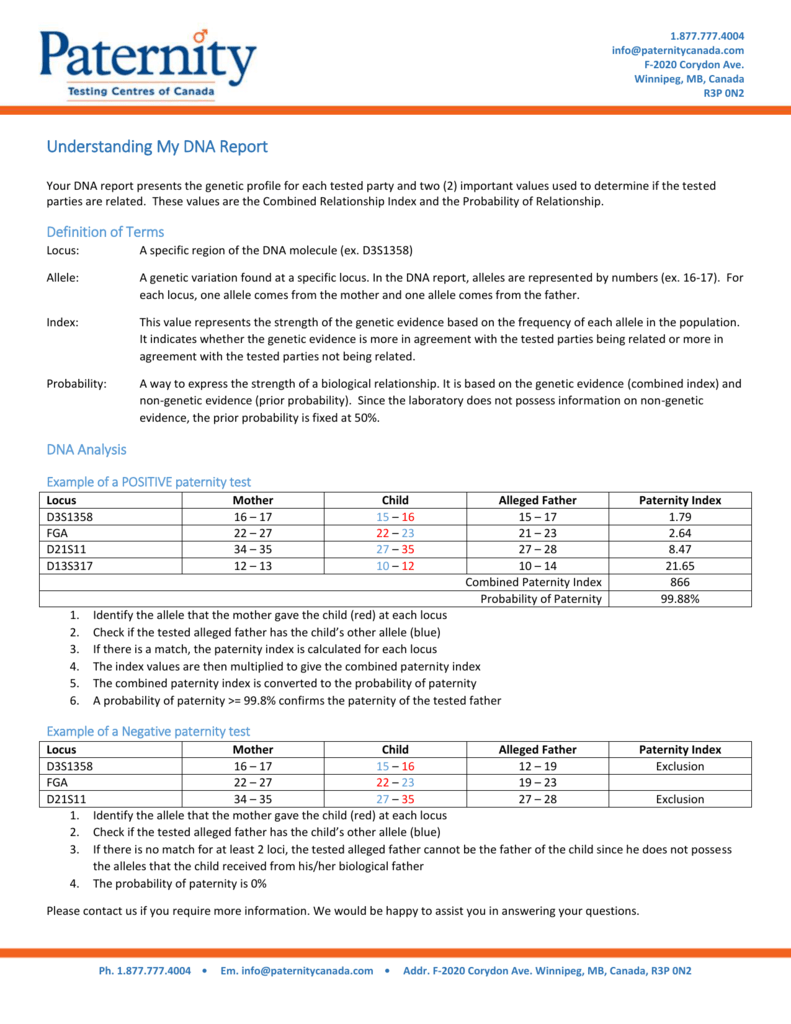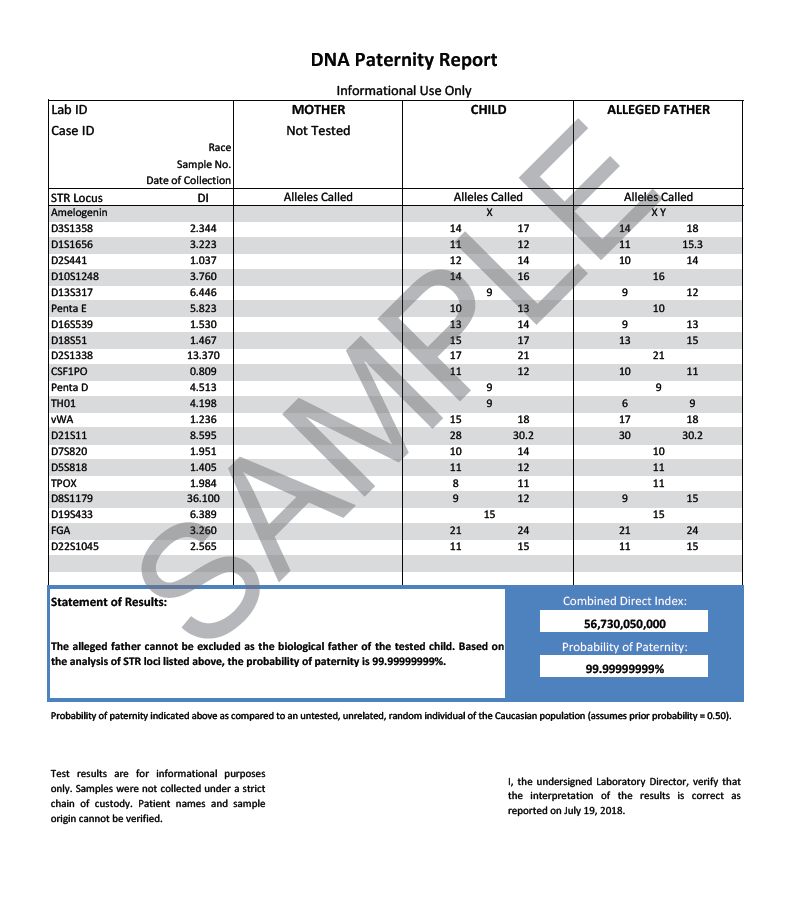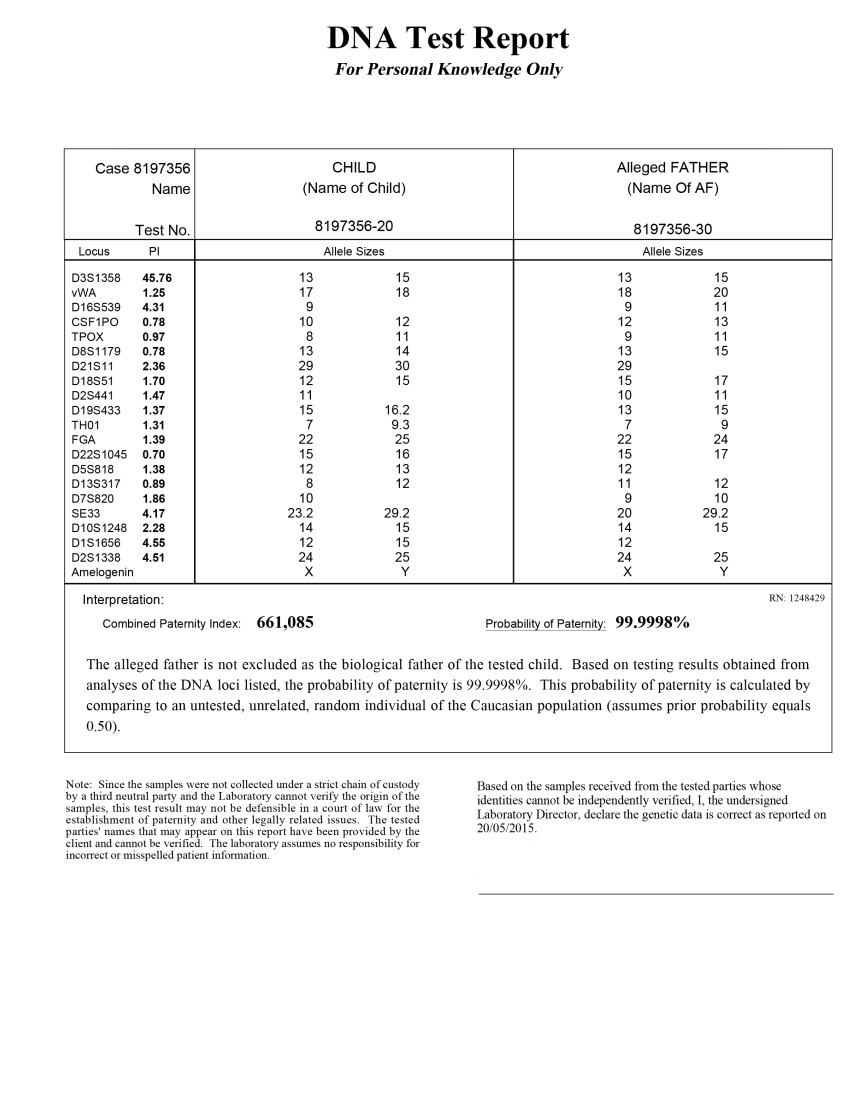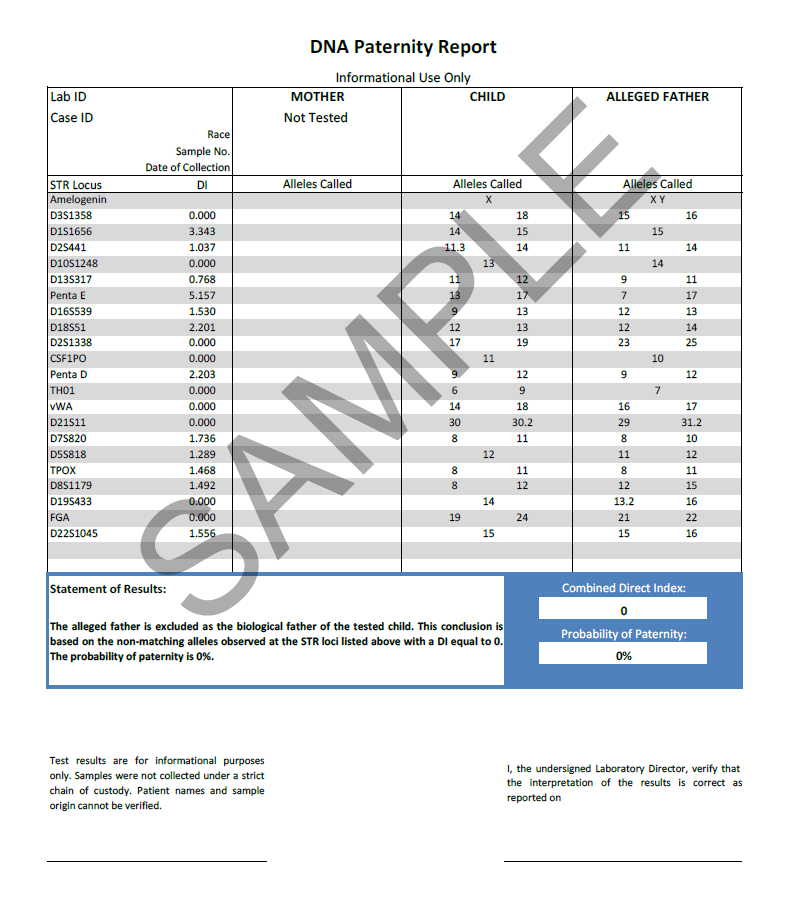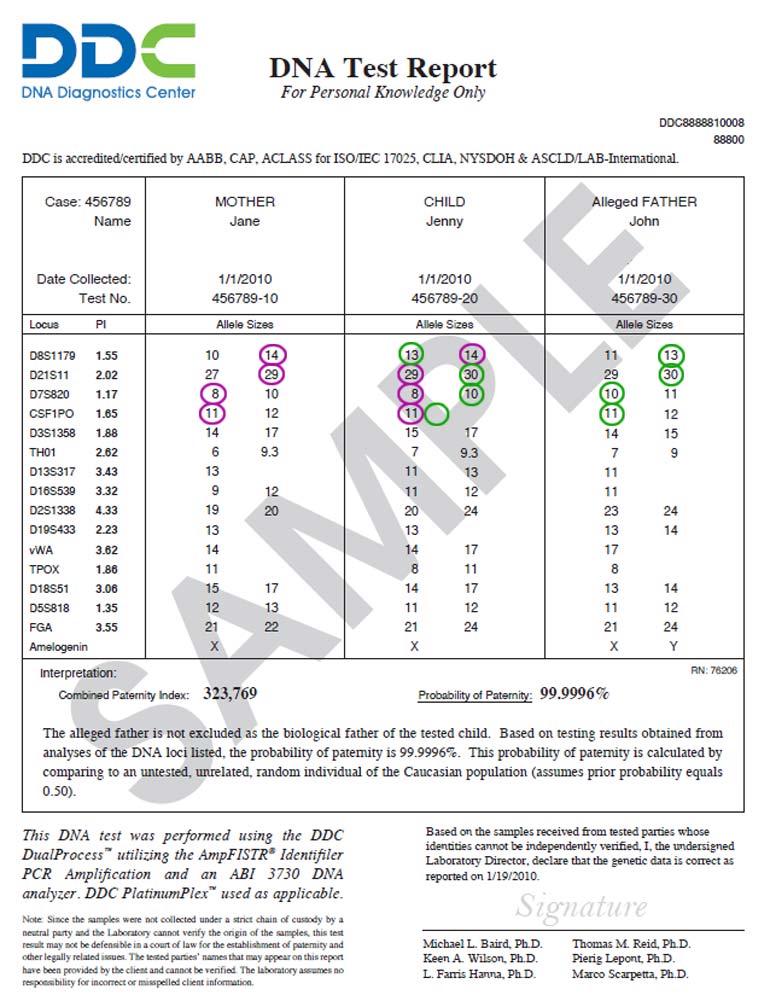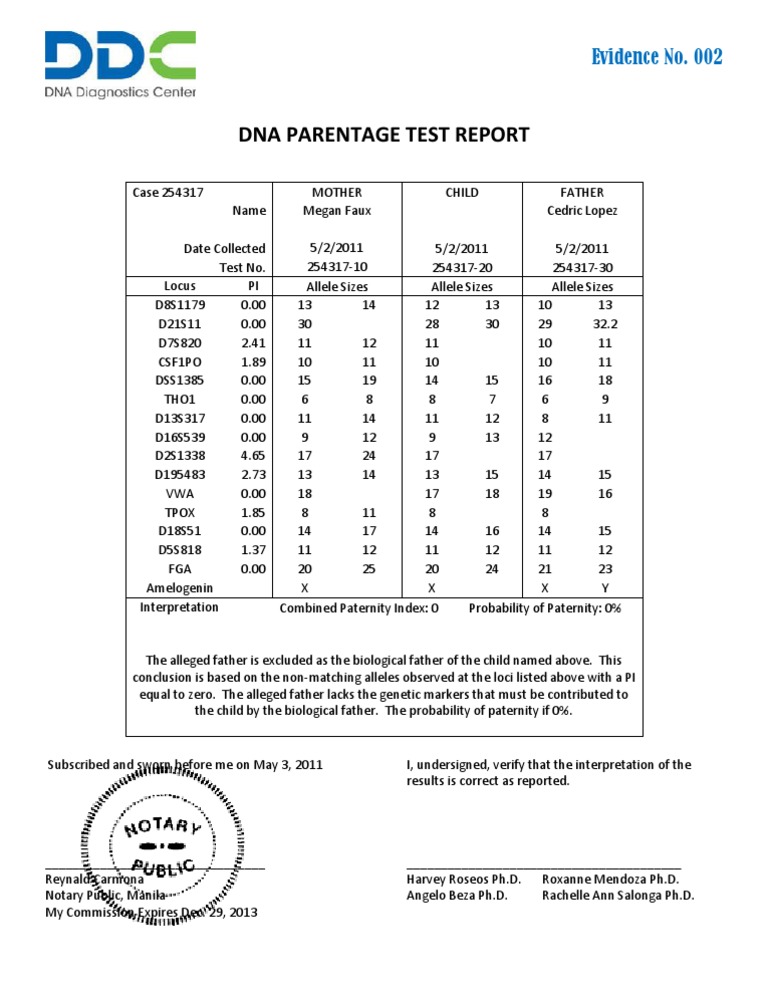Dna paternity test results usually list a “probability of paternity” as two values: Your ddc paternity test results report contains the following main sections, with each displaying important information. Below you can find sample reports to see what your result will look like. A dna test cannot tell with 100% certainty that someone is related—only that the odds are very, very high—so a 100% result is likely fake. Page 2 is where you will find the results of your dna paternity test and a chart with the genetic markers for each person tested (dna profile).
A dna test cannot tell with 100% certainty that someone is related—only that the odds are very, very high—so a 100% result is likely fake. Genetic system table (locus/allele sizes chart) combined paternity index; View a sample dna test report for a paternity test: Ddc paternity test results report overview. The first, is a letter is to a paternity testing body and the other is to the mother of the child.
The reports presented below are sample results. Ddc paternity test results report overview. The sample paternity test results here provided. Page 2 is where you will find the results of your dna paternity test and a chart with the genetic markers for each person tested (dna profile). No need to install software, just go to dochub, and sign up instantly and for free.
Download fill and print for free. The sample paternity test results here provided. When the results letter is presented after the paternity test is complete there will be several portions of the letter that may appear written in latin. Interpreting paternity test results involves analyzing the genetic markers, loci, and alleles, comparing sample data between the child and potential father (s). Here are two letter templates to use if you want to have a paternity test carried out. Below you can find sample reports to see what your result will look like. The results of the analysis are shown in the following table: Could the dna result be incorrect? Determining biological relationships for peace of mind. Results are typically reported as a probability of paternity, such as 99.9%, indicating the likelihood of the tested person being the biological father. Most illnesses will not affect the dna result. No need to install software, just go to dochub, and sign up instantly and for free. Complete paternity test results letter online with us legal forms. Your ddc paternity test results report contains the following main sections, with each displaying important information. They have been created purely to help you understand what you results will look like.
The Paternity Test Results Contains The Following Main Sections In The Report, Each Displaying Important Information.
Could the dna result be incorrect? Save or instantly send your ready documents. Genetic system table (locus/allele sizes chart) combined paternity index; View a sample dna test report for a paternity test:
Call Now To Order Your Paternity Test:
The results of the analysis are shown in the following table: Page 2 is where you will find the results of your dna paternity test and a chart with the genetic markers for each person tested (dna profile). Your dna paternity test report will consist of the following 3 pages: When the results letter is presented after the paternity test is complete there will be several portions of the letter that may appear written in latin.
This Unique Identification Number Is Assigned To Your Case By The Laboratory.
In all analyzed pcr systems, jim doe does show the genetic markers which have to be present for the biological father of the child john test. Following paternity testing guidelines, paternity results show whether the possible father is excluded or is not excluded as the biological father. Easily fill out pdf blank, edit, and sign them. They have been created purely to help you understand what you results will look like.
Edit, Sign, And Share Paternity Test Results Letter Online.
[1] however, it can provide a 0% result. Updated on august 4, 2021. Ddc paternity test results report overview. Results are typically reported as a probability of paternity, such as 99.9%, indicating the likelihood of the tested person being the biological father.
